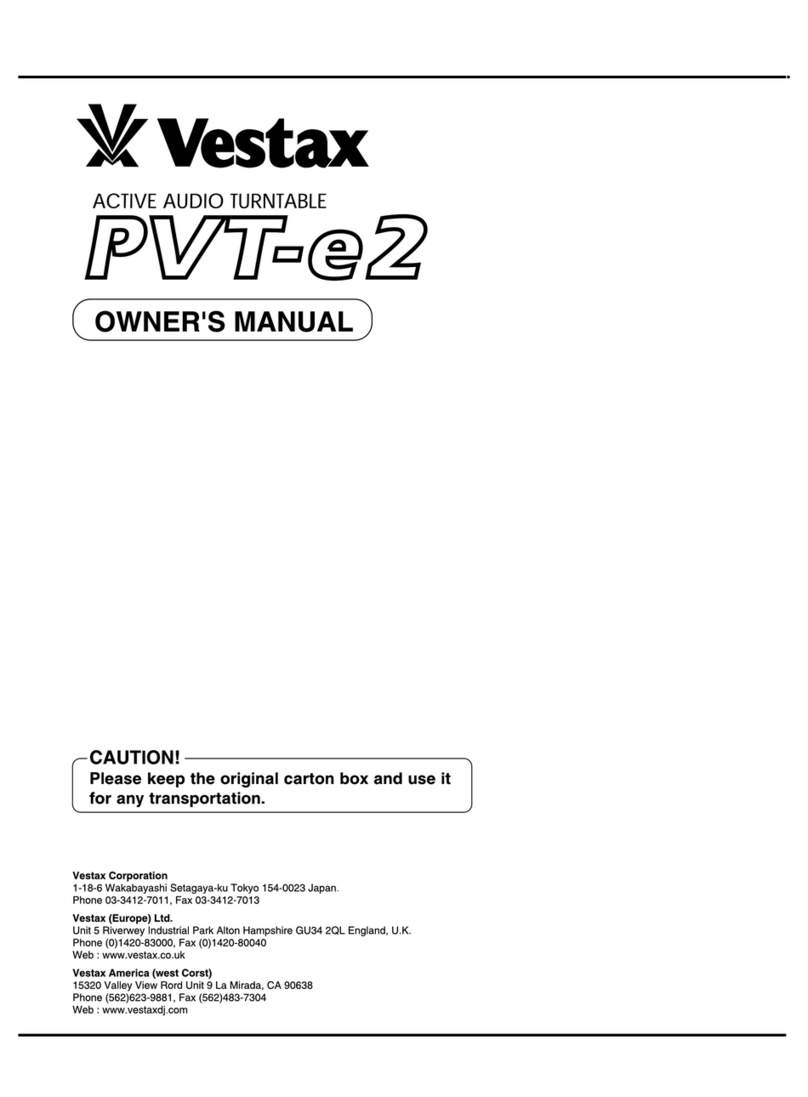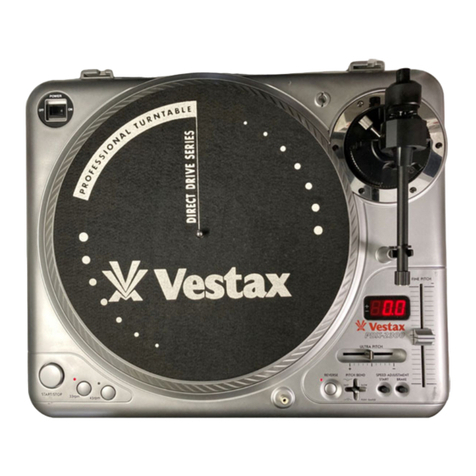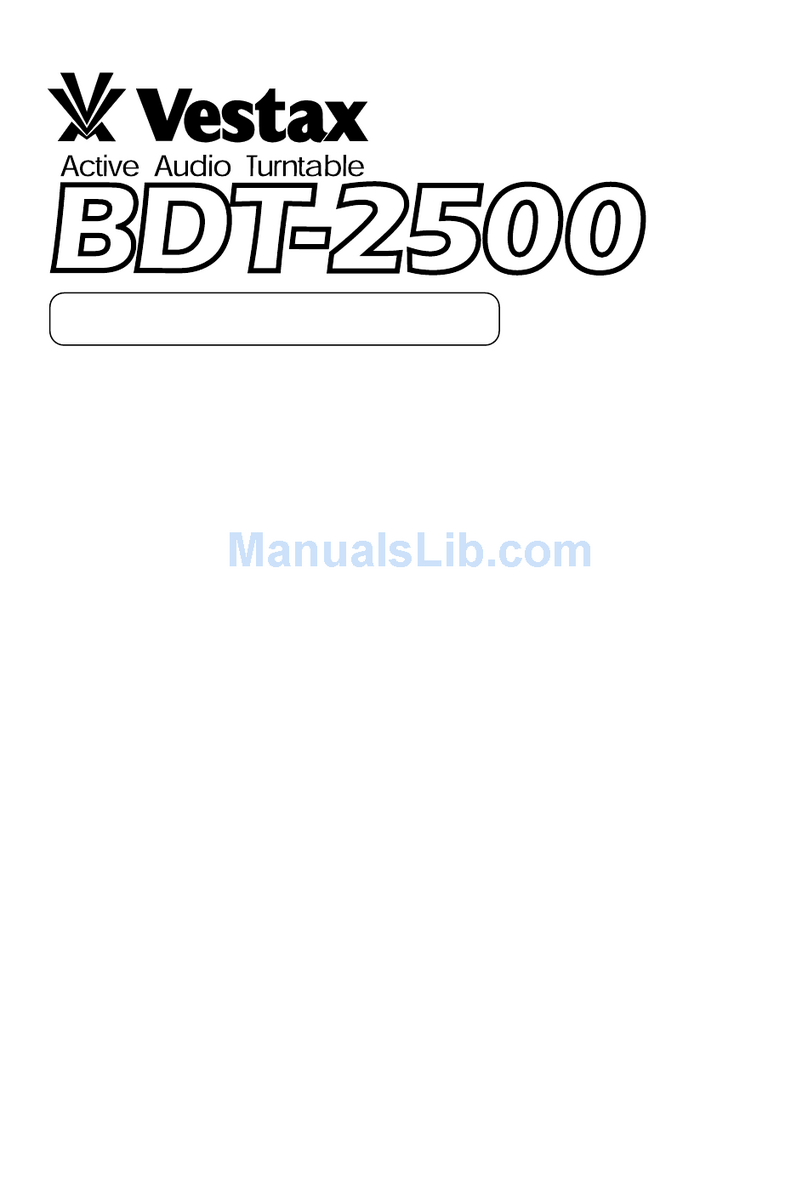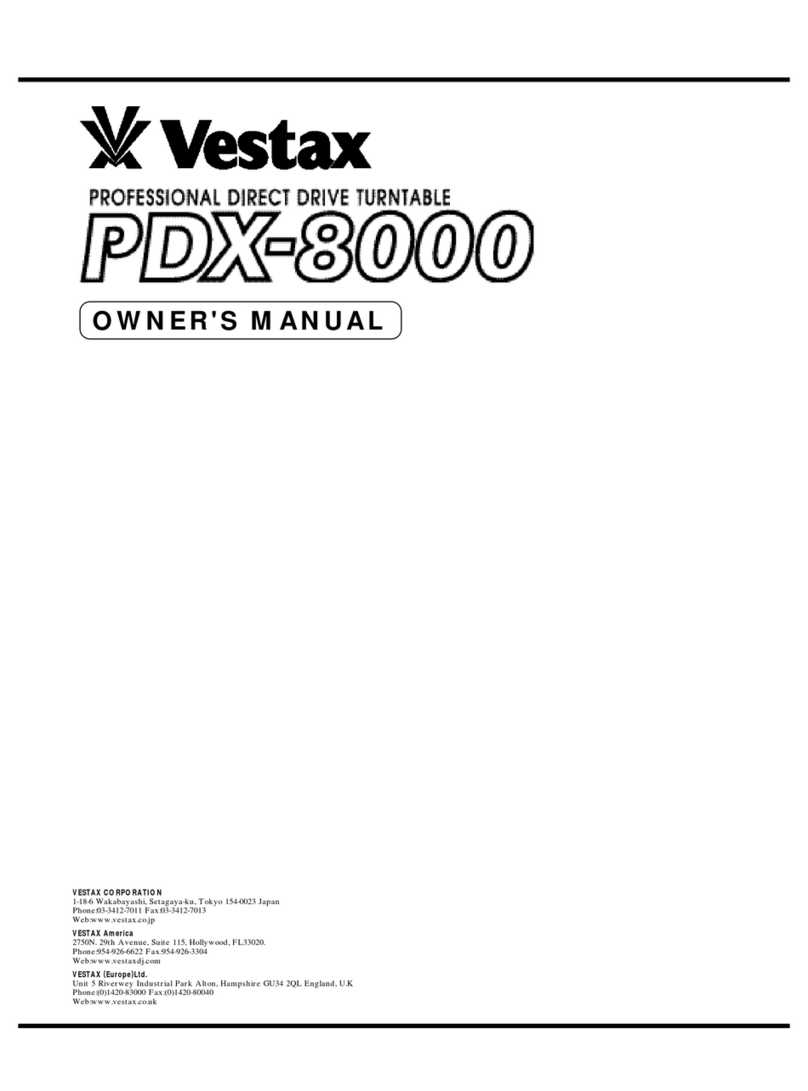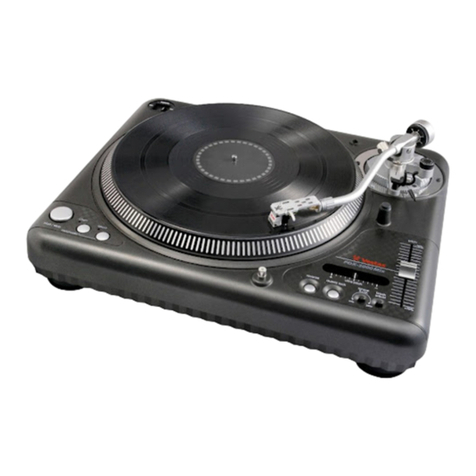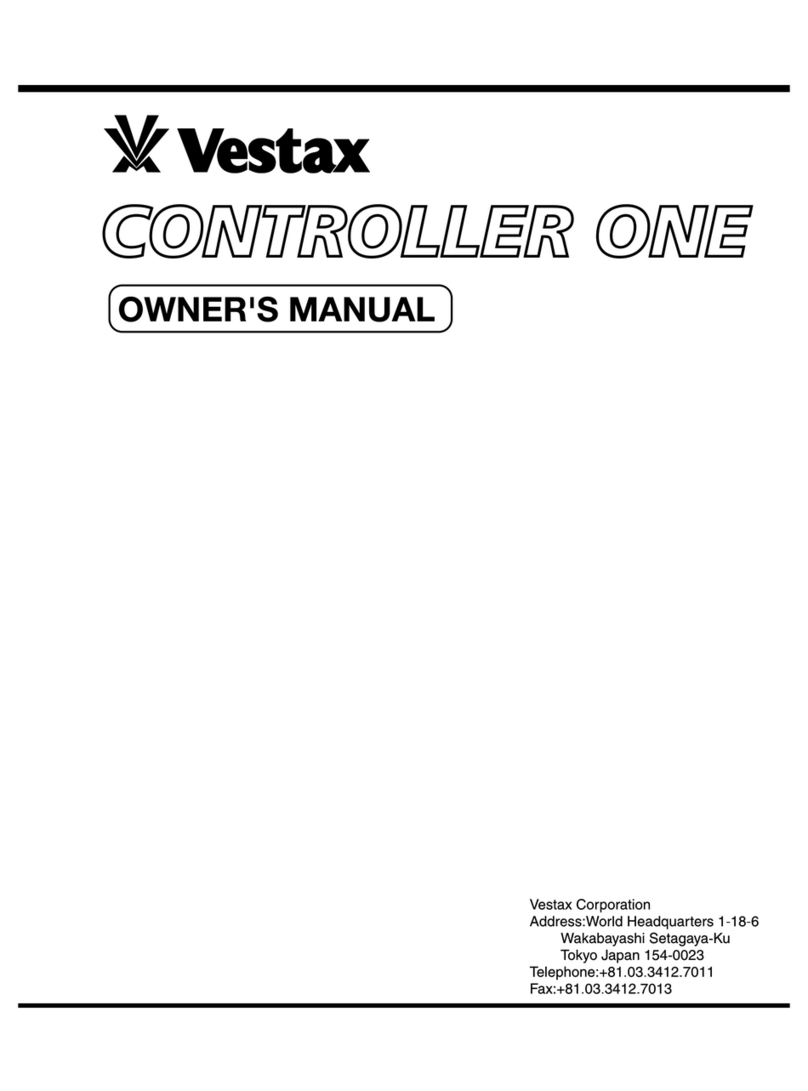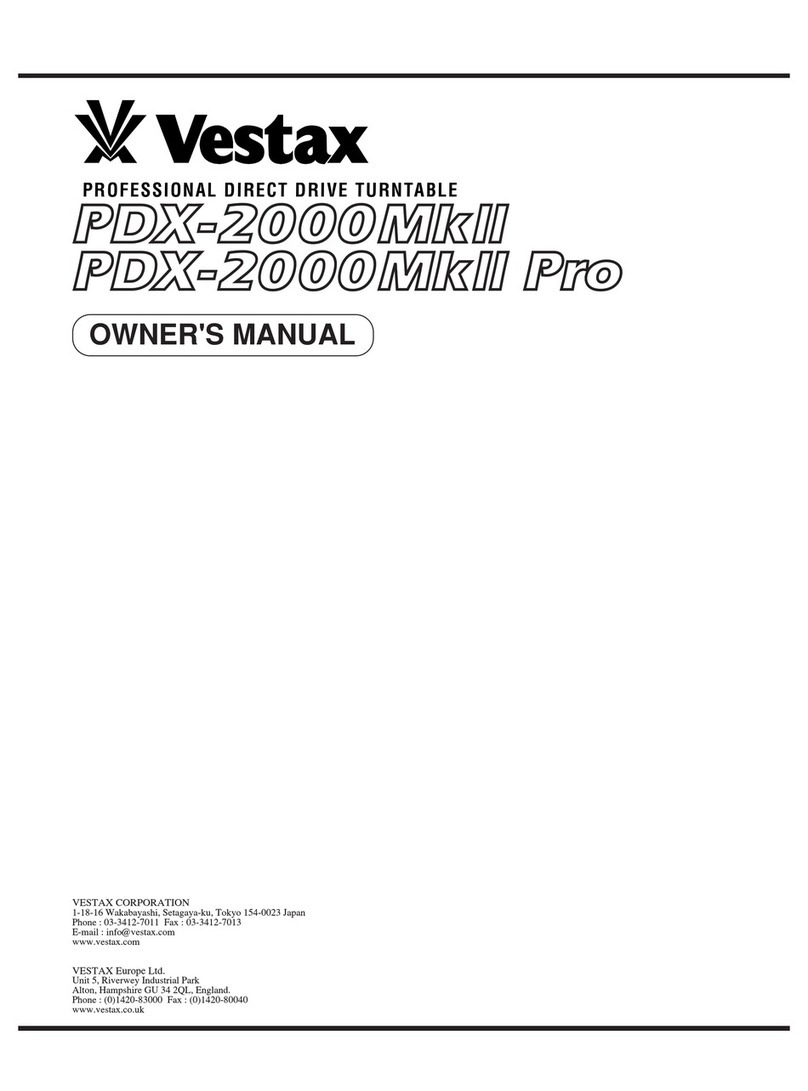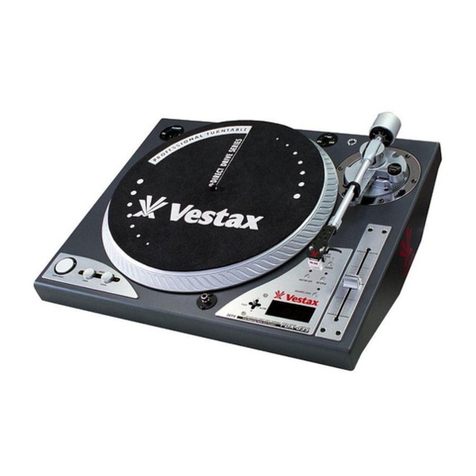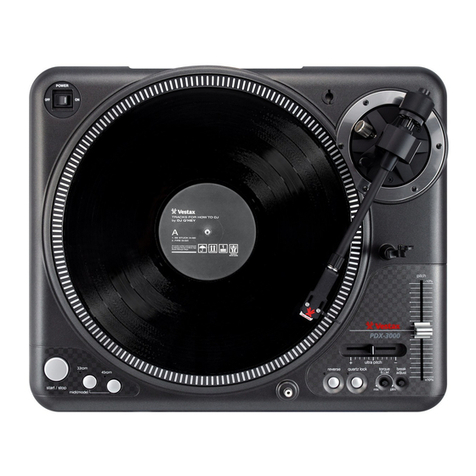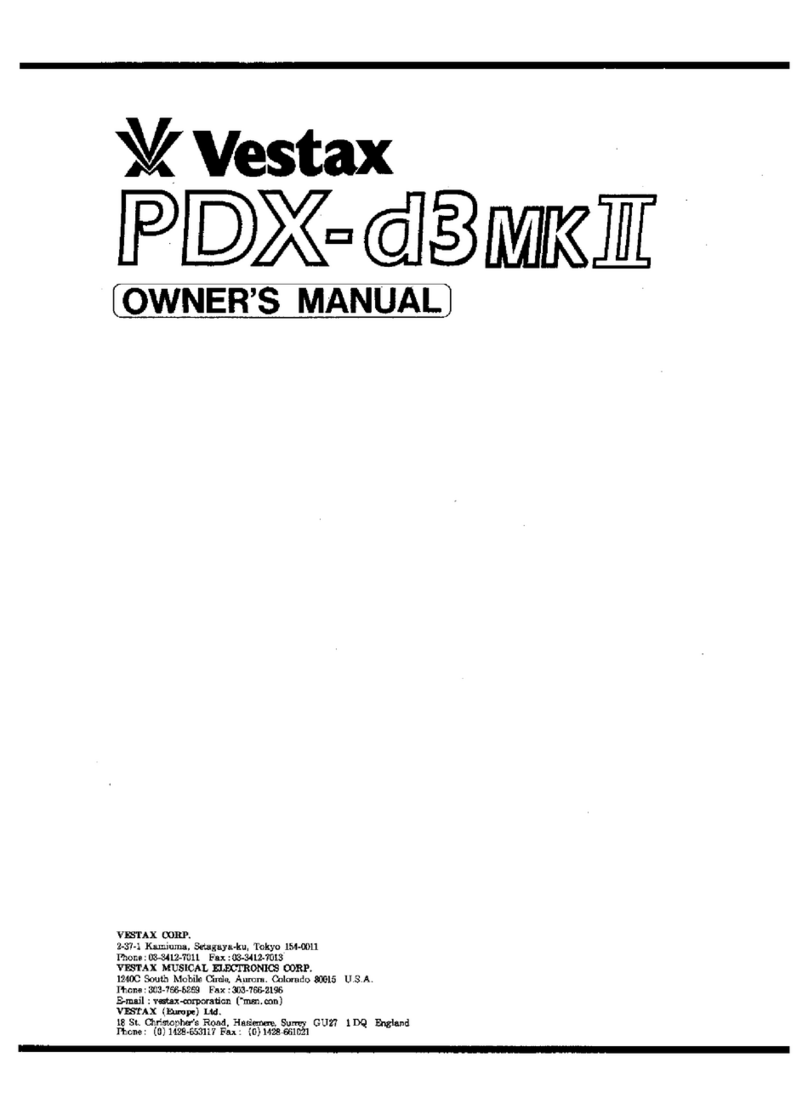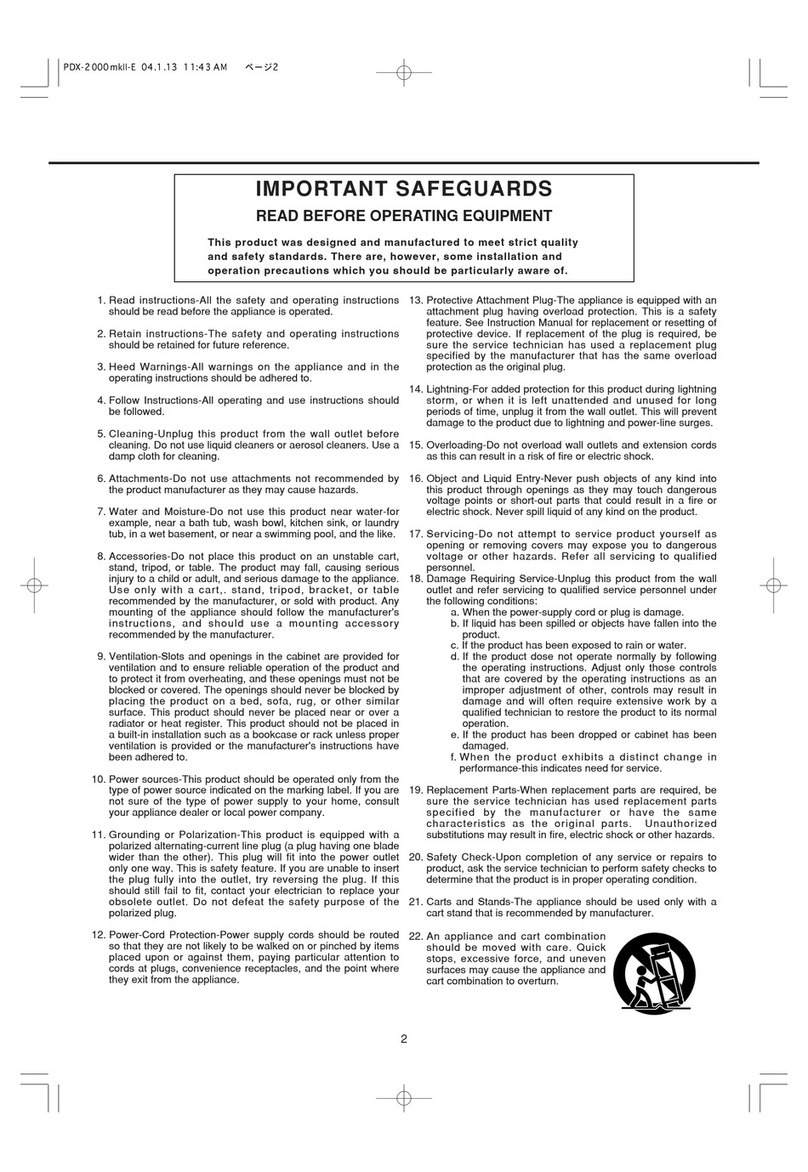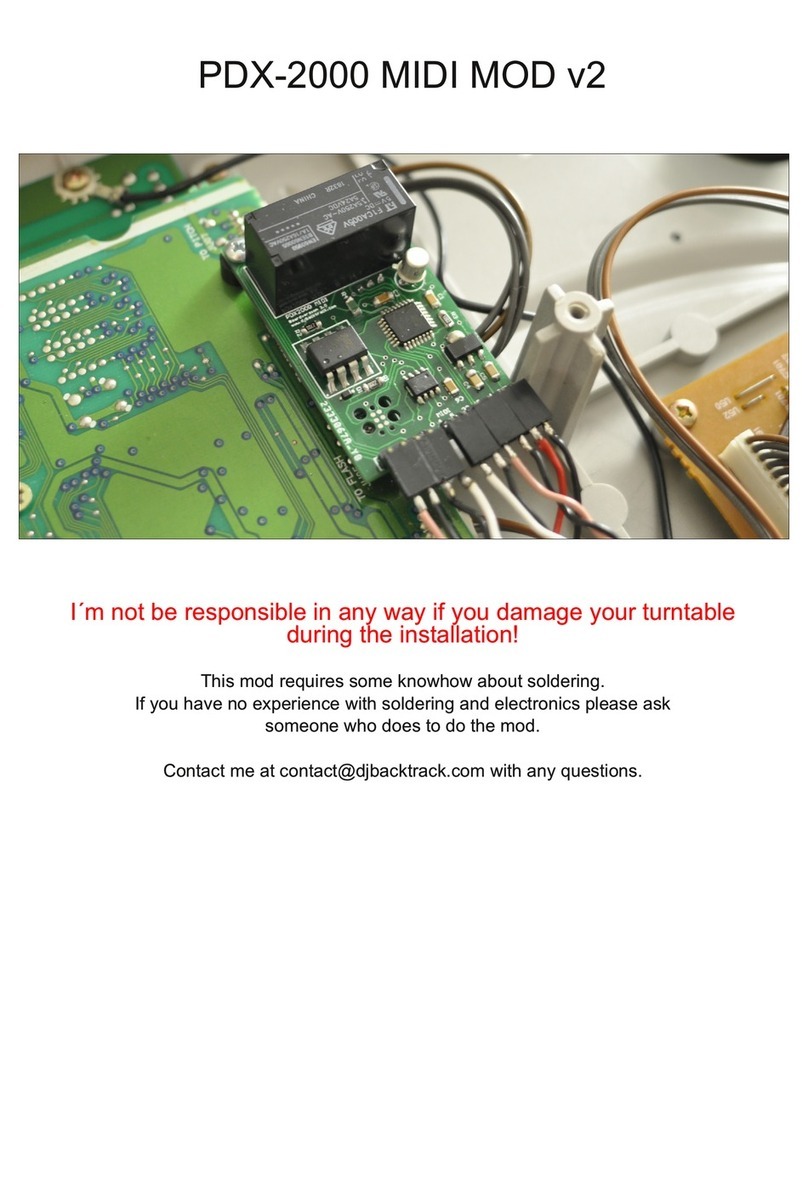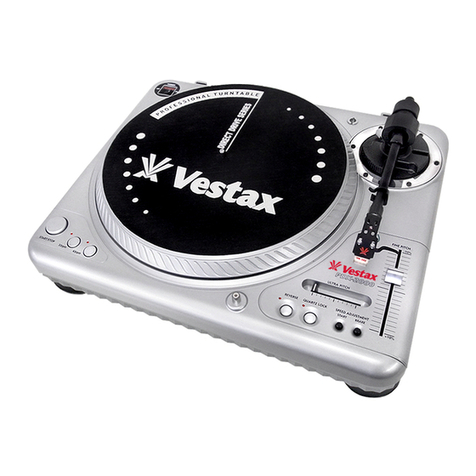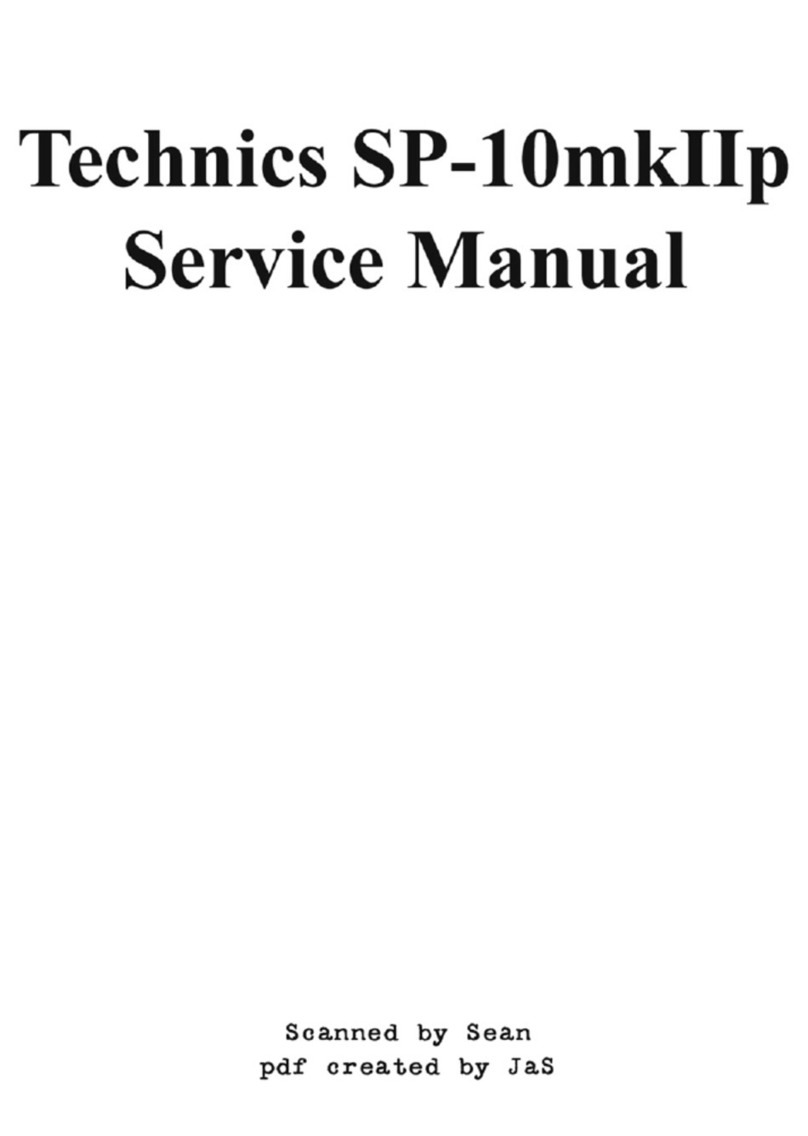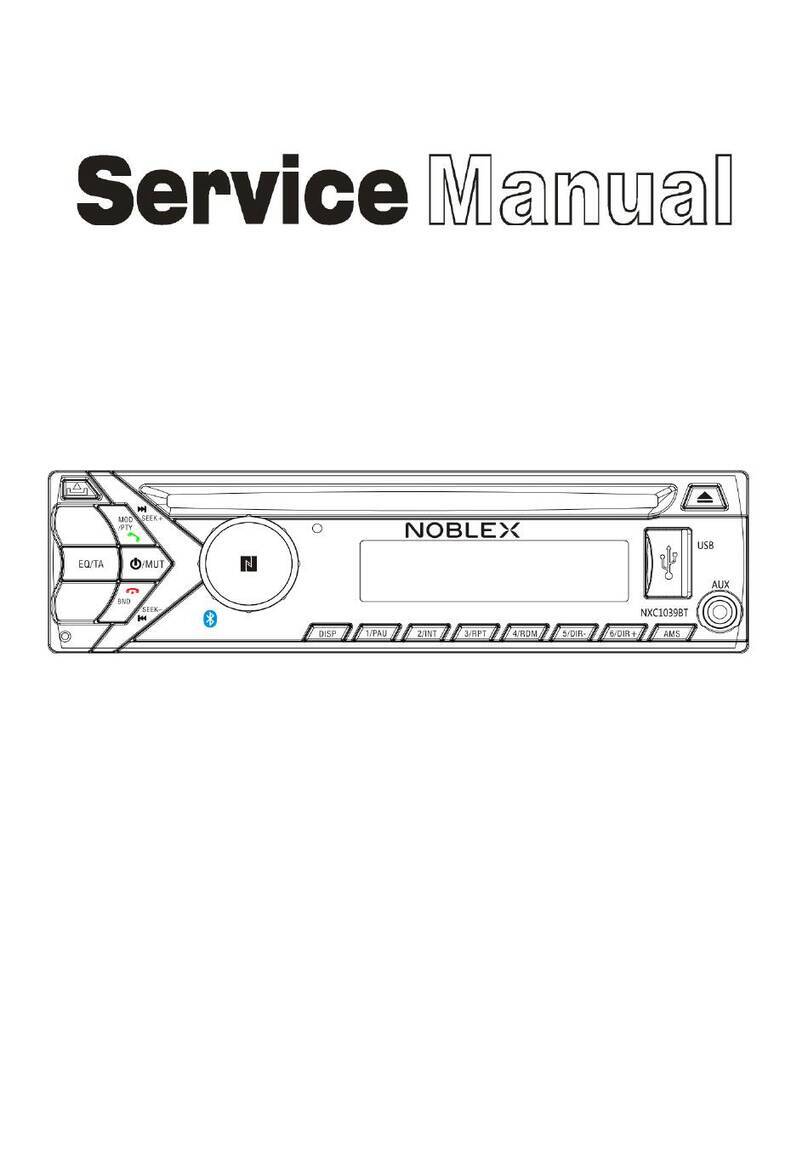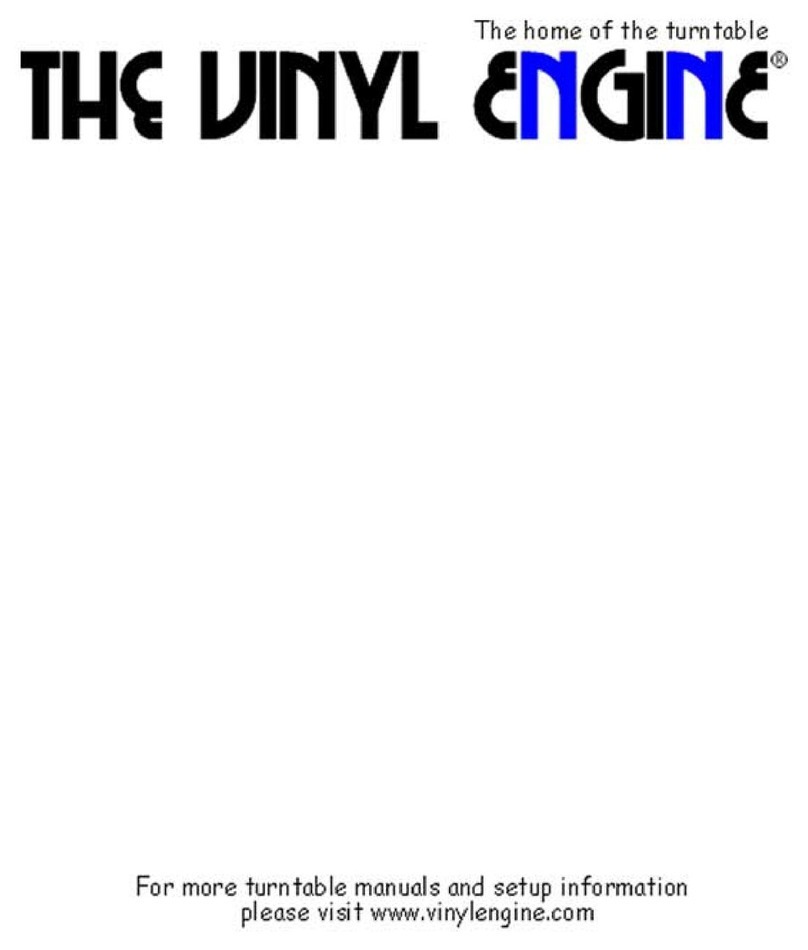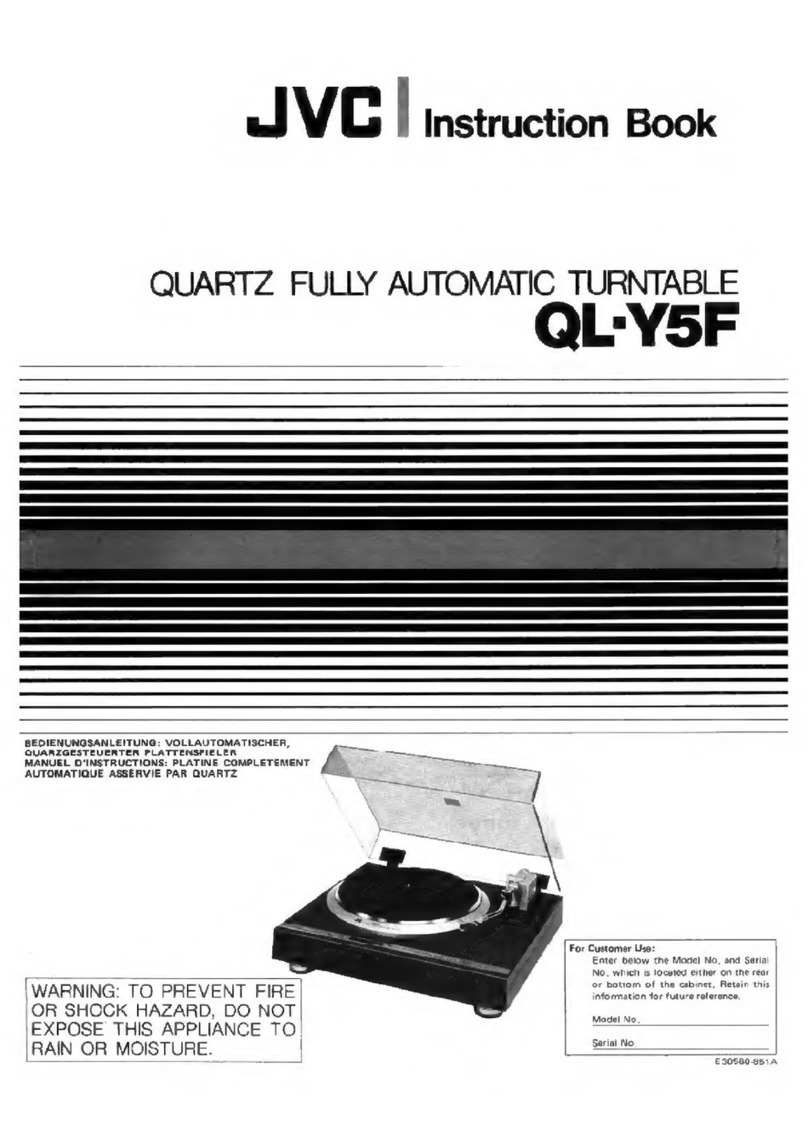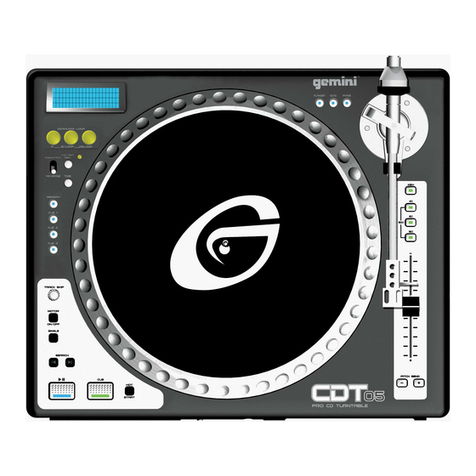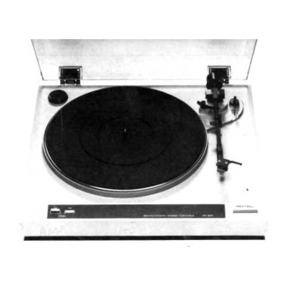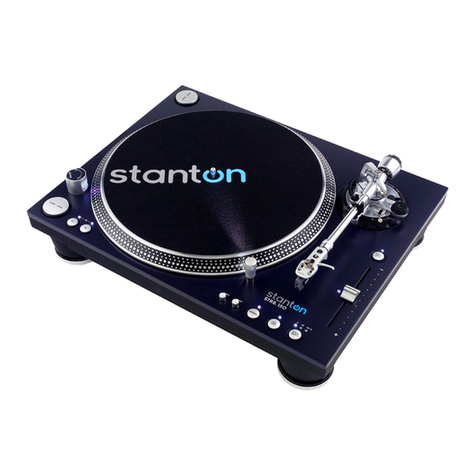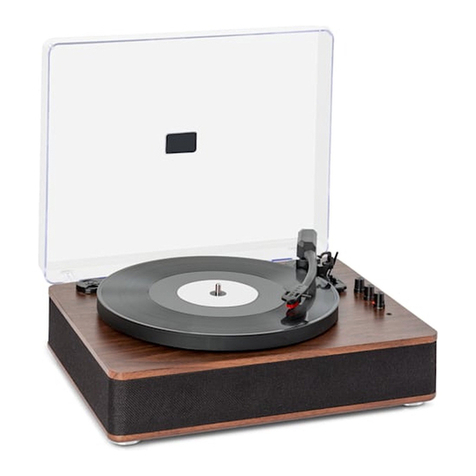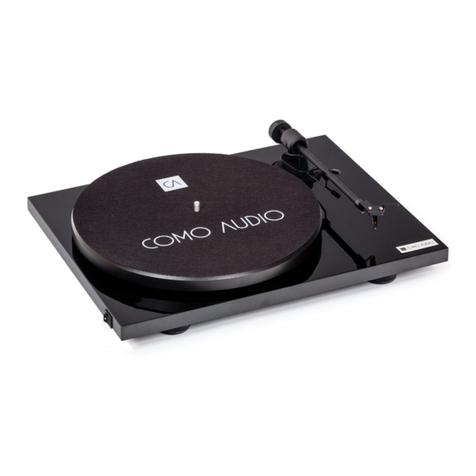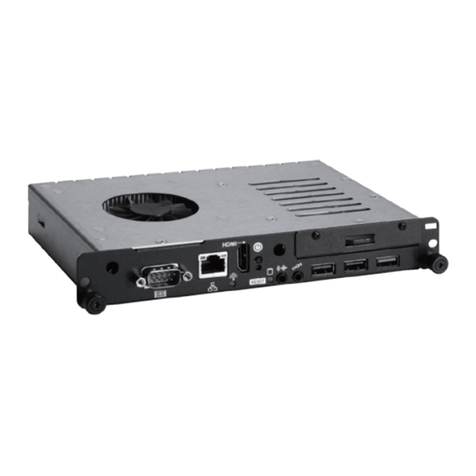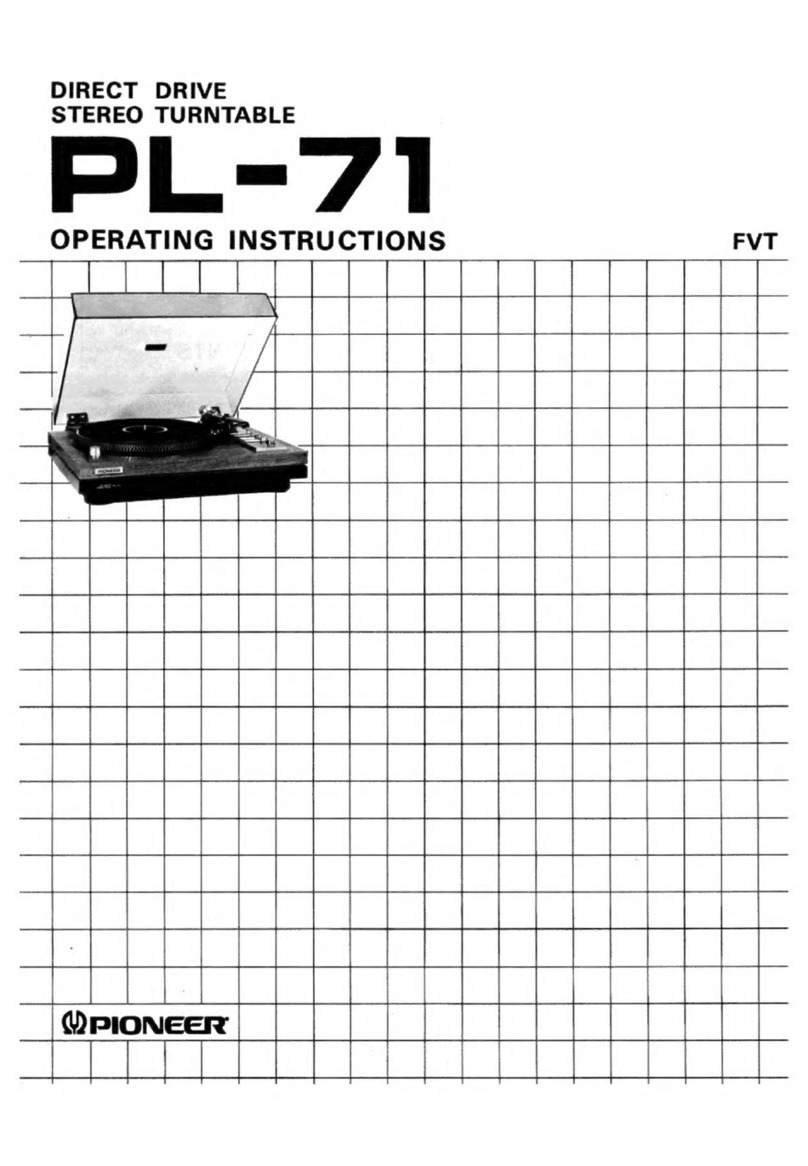
HE AD F R E QUE NC Y E QUA L IS ATION
VR X-2000 R E C OR DING
The VR X-2000 is an innovative machine for the experienced profess ional mus ician.
When us ed with proper training and knowledge, your ability to produce unique, high
quality recordings with the warmth of vinyl is greatly improved.
Although the VR X-2000 is comparable to standard mas ter recording laces (such as the
Neuman) there are a number of important differences to be aware of. Two very
important issues to consider are;
HE AD F R E QUE NC Y E QUA L IS AT ION
The manner by which the C utting Head reacts to various frequencies will affect the
final output. B asically, the C utting Head is like a very small yet powerful speaker
when it reacts to various s ound frequencies. (R efer to fig.1& fig.2) E xtreme
frequencies will caus e it to move rather s everely, with that movement being further
reflected in the sound recorded.
G R OOV E P IT C H
-50
-40
-30
-20
-10
0
10
20
30
0 100Hz 1kHz 10kHz
[dB ]
fig.1 : C UT T ING HE AD F R E QUE NC Y R E S P ONS E NE UMANN S x74
V R X-2000 3 B and E Q
NE UMANN Motion F eedback
VR X-2000 C onstant P itch
NE UMANN Variable P itch
950Hz
-50
-40
-30
-20
-10
0
10
20
30
0 100Hz 1kHz 10kHz
[dB ]
fig.2 : C UT T ING HE AD F R E QUE NC Y R E S P ONS E VE S T A X VR X-2000
Though both machines can tolerate such extreme sounds, the way in which they are
handled is completely different. T he proces s of compens ating for these extremes
(peaks & troughs), namely E qualization, involves the flattening / correction of the
incoming curve s ignal. The method by which the Neuman(fig.3) and the VR X-
2000(fig.4) adjust curves is very different. On a big powerful machine, any extreme
incoming signals are compens ated for with an inverted signal, the res ult being a true
sound with a flat signal.(fig.5) This system of compens ation is called motion feedback
and as mentioned above, is used exclusively in large expensive recording lace
systems like the Neuman. T he V R X-2000, however, utilizes a standard graphic E Q
system to compensate for extreme incoming signal curves. T his system is aurally
difficult and requires hours of practice and experimentation to get it perfect over and
over again.
fig.3 : C UT T ING HE AD F R E QUE NC Y R E S P ONS E NE UMANN S x74
950Hz
-50
-40
-30
-20
-10
0
10
20
30
0 100Hz 1kHz 10kHz
[dB ]
950Hz
-50
-40
-30
-20
-10
0
10
20
30
0 100Hz 1kHz 10kHz
[dB ]
cutting drive amp
cutting head
input
driving coil
feadback coil
fig.5 : MOT ION F E E DB AC K C IR C UIT
fig.4 : C UT T ING HE AD F R E QUE NC Y R E S P ONS E VE S T AX VR X-2000
VR X-2000
Advantages
Advantages
* S mall S ys tem
* No cooling s ys tem is needed
* C an us e a small power amplifier
Disadvantages
Disadvantages
* R ecording level is not perfectly flat
* Difficult to adjust the E Q to get a great sound
* T he recorders E Q, needs to be adjusted profess ionally.
* P rofes sional service is needed to replace or tune up
selected parts .
NE UMA NN
* V ery flat frequency response specifications
* True sounding final output
* Needs a very powerful amplifier (600W)
* Head coil gets extremely hot (210•‹C ) and needs to be
cooled down using a helium gas cooling system
* V ery expensive, heavy, high-end professional use only
sound recording device.
Although the V R X-2000 differs greatly from the big machines , such as the Neumann,
attaining high quality recordings time and time again can be easily achieved with s tudy
and pers everance. F urthermore, acknowledging the above differences will help you to
unders tand the proces s by which to grasp your pre cutting needs, thereby facilitating
eas ier high end results.
ATT AINING T HE B E S T C UT AG AIN A ND AG AIN.
To ensure that your results live up to your expectations of sound quality please follow
the steps below carefully until you have become a consistent producer or amazing,
unique recordings.(fig.6)
C D/MD/P C
comp/limitter
mas ter
comp/limitter
G E 33S A E Q MIXE R AMP
E Q
detec tor loop
input output
fig.5 : VR X-2000 R E C OME NDE D S E T UP
S et up the cutting stylus, making s ure that its position is correct and s ecure.
C heck the stylus connection and pres sure.
Warm up to the heating coil based on your room temperature and desired sound
style. (Y our genre - Jazz, hardcore - will require slightly to greatly different
temperatures )
P erform a one-minute tes t cut to check for irregularities in cutting quality.
Ins pect the cutting blank and the residue (from cutting) for cracks and cutting
precision. T IP : Y ou should watch the "cutting-tip"(offcut) to see that the cutting is
precisely and smoothly.
Assuming that the above check has proved positive, this check is to allow you to
set up for your final recording correctly.
C onnect your input s ource directly to the V R X -2000 - DE F F INAT E LY NO E Q - T his
will help you s ee how your V R X-2000 records and allow you to understand its
recording character.
Make a sample recording - NO E Q - for a few minutes. The longer the recording
the more easily it will be for you to adjust your E Q later to ensure a superior final
cut.
P lay back your recording through an E Q making adjustments to the sound (E Q)
according to your s tyle, tas tes or target res ult.
Thes e E Q adjustments, that you have made on the playback of the test, are what
will ensure that the final cut is flat and true to your input source.
A frequency range of between 200Hz - 600Hz is the recommended range that will
give you warmth and s ens itivity whilst still being clearly balanced.
Y OUR C UT T ING LE VE L S HOULD NOW BE S E T T O MINIMIS E E XTR E ME 'OVE R '
P E AK S . Use of the input meter on the V R X-2000 is recommended in this case.
This balance is important so as to minimize any chance of damage to your head
and the heating coil of the VR X-2000.
R econnect the V R X-2000 to your input source through your E Q.
E nsure that your input sound is well balanced and the extreme peaks compensated
for.
Make your final cut.
(1) TE S T C UT - TR IAL C UT
A.
B .
C .
D.
E .
(2) S T R A IG HT C UT - S OUND INP UT C HE C K & E Q
A.
B .
C .
(3) P L AY B AC K - E Q A DJ US T ME NT
A.
B .
C .
D.
(4) F INA L C UT - UNIQ UE QUA L IT Y E ND R E S ULT S
A.
B .
C .
**NOT E -- T he taking of notes will facilitate an improved unders tanding of the
recording process and help speed up your recording proces s. Thes e notes will also
allow you to perfect your proces s over and over again.
